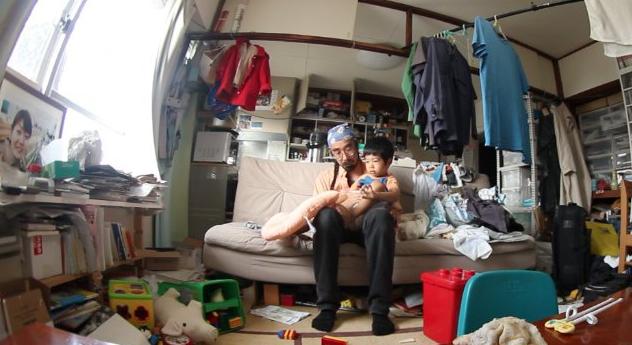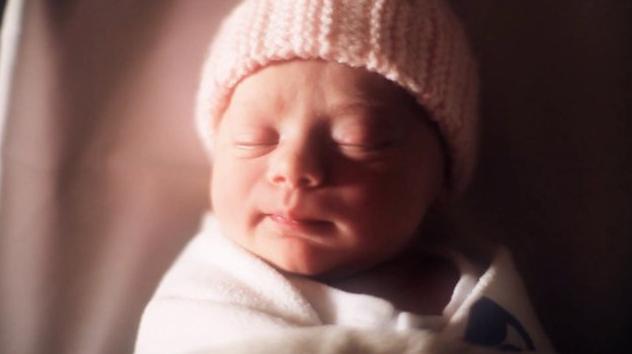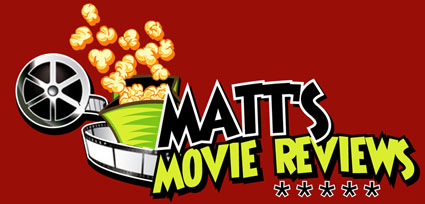Scottish born filmmaker Kevin Macdonald has created a successful career as a documentarian and feature film director, winning an Oscar for the stirring documentary One Day in September and helming acclaimed films The Last King of Scotland and State of Play.
Macdonald’s latest movie, Life in a Day, is also his most ambitious. Born out of a partnership between YouTube, Ridley Scott Associates and LG Electronics, the film is made up entirely of submissions from around the world (80,000 submissions, equalling 4500 hours from 140 countries to be exact), filtered down into a 90 minute feature about life on Earth on the 24th of July, 2010.
A fascinating and at times moving time capsule, Life in a Day is sure to generate a lot of discussion about the many aspects that makes life such a thrilling ride.
Kevin Macdonald spoke to Matt’s Movie Reviews about the making of Life in a Day, human nature, and his career thus far.
Enjoy!
So, when you received the 80,000 submissions equalling to 4,500 hours of footage, did you think “What the hell did I get myself into?”
(Laughs) Somewhat. But it would have almost been worse if we received 14 hours of material. Then we would have been really panicking, thinking “What are we going to make the film out of?”
But it was a duel response. It was going to make it easier to make the film in some ways, because we had more good material and that somewhere in there would be fascinating things. But the logistical challenge of organising all of that material was very difficult. We had to hire 25 assistants to view all of the material, log it, and catalogue it before I started looking at the good stuff, because there was no way that one single person could look at all of that.
How did your assistants categorise the material?
They categorised it in a whole sort of variety of ways. They did categorisations based on country, quality of image, quality of sound...key words they would also do. There were lots of shots of men filming their attractive girlfriends frolicking in a park, so we had a categorisation for that called “My beautiful girlfriend”. We had a categorisation for people on the beach, and that sort of thing.
Most importantly we had a categorisation for their overall sense of interest and quality of the piece, and that was given a star rating of 1 to 5, with 6 for “so bad it’s good”.
 |
"There is an intimacy and an honesty to it, which really goes inside peoples lives which you wouldn’t expect." - Kevin Macdonald |
What was it that inspired you to take on such a mammoth project?
Just the fact that it’s never been done before! It’s pretty interesting to do a totally new kind of film, and that’s what this is. It’s a film which has very little in common with any other movie you’ve seen before. People have compared it to Koyaanisqatsi or Baraka, but it’s actually nothing really like those because this is filmed by lots of people, thousands of people around the world, simultaneously filming on the same day and they are all amateurs.
So there is an intimacy and an honesty to it, which really goes inside peoples lives which you wouldn’t expect. It started for us as a kind of a novelty, a different kind of film, an experiment. But actually in the end I think it has become a very accessible film, which is a kind of a weird thing. It’s a very enjoyable movie to watch. You laugh, you cry hopefully, and you have an emotional experience like you would expect in any movie.
People were more than willing to open up themselves and their world to the project. What does that say about human nature these days?
I think it shows the positive side of the internet and of social media. I think it’s extraordinary that people will share their own lives and give so much of their time to a project, where they did not make anything financially. They just want to be part of something and they think this is a really interesting thing to do and be involved with. That’s got to make you feel positive about human nature.
I usually make films that are very dark and upsetting in some ways, and this is a film that has positive aspects of human nature, and of our relationship with technology, I suppose.
How did you determine the structure that the documentary would take? Considering how much content was presented to you, the structure of the film could have gone a variety of different ways.
When we started off, we didn’t have any notion of where it was going to go. We deliberately didn’t... and when I say “we” I mean myself and my editor Joe Walker...we thought that we don’t want to prejudice what we’re gonna see. We don’t want to think “Well, in advance we know we’re gonna want to have a scene about this, and a scene about that”.... really what I did was sit around and watch about 350 hours of the best material from the 4500...the stuff that was rated 4 and 5 star, for about 6 or 7 weeks, and just let it wash over us.
Then themes started to emerge, and connections and contrasts all started to come out of the material, and great characters started to come out and you start to think, “That would be a good beginning”, or “That could go in the middle”.
It’s kind of finding the sculpture in the big mess, to use the Michelangelo analogy.
 |
| "It’s hard finding subjects that are worth making films about, or one that is interesting enough to go through what you need to go through to make films." - Kevin Macdonald |
At times the film will back track to certain people. There was the American lady who had a big operation, the Korean man travelling across the globe, and the East European farmers. What stood out about those people?
Well, partly that they were all fascinating characters and I had an emotional response to them. But also their happened to be more good material on those, and you could follow and track them during the course of the day.
Whoever filmed them had filmed more, though there were people who are wonderful characters in the film who only appeared once, and that could be that there was only once place where they fitted in the structure, or could be that it was the only bit that they filmed.
The reason for the recurring characters was that it felt to me, that is was one way of making the audience feel like they were on a journey. That there were actually certain people, you see them and think “Oh, I’ll like to know more about them”, and they do come back. Other people you might also want to know more about but they don’t come back, so you are thinking “Will that person come back? Are we going to learn more about their story? What’s going on with them?” So there is a tension involved with that, and it pulls you through the movie.
You posed three questions in the movie: What do you love? What do you fear? And, what is in your pocket? Now that we heard what the rest of the world has to say, could you be able to answer those questions for us?
That’s an unfair question (laughs). Well, start with the easy one...What’s in my pockets? Nothing very interesting. I’ve got £10 and a pile of change (laughs). That’s all I’ve got in my pockets, maybe because I’m sitting inside and just got up.
What do I love? Well, like a lot of people I love my family most of all. I love my kids...that’s probably the most common response in the film, that we found.
What do I fear? I think probably my response is similar to what a lot of people say, which is boredom and extinction (laughs). That’s what most of us deep down fear, a boredom that leads to not existing anymore....dying...getting old. Those things are terrifying and are the fundamental feeling most of us have deep down.
Unless we’ve got something terrifying day on, in the immediate vicinity around us, be it a bear or a tiger (laughs).
To make things fair, I love my family, I fear snakes, and I have nothing in my pocket because I am sitting at my desk and don’t have anywhere to go.
(Laughs)
You work is now separated between feature films and documentaries. What determines which field you will dedicate yourself to?
Well, I guess I like a balance. It’s nice to be able to think, “Well I’ve done my feature film. Let’s go back to documentaries.” Or, vice-versa.
It’s hard finding subjects that are worth making films about, or one that is interesting enough to go through what you need to go through to make films. Sometimes people come up to me with an idea, sometimes I might have an idea. But that’s the hard thing, the rare thing, finding a good subject. So you double up your chances if you do both fiction and documentary.
|
